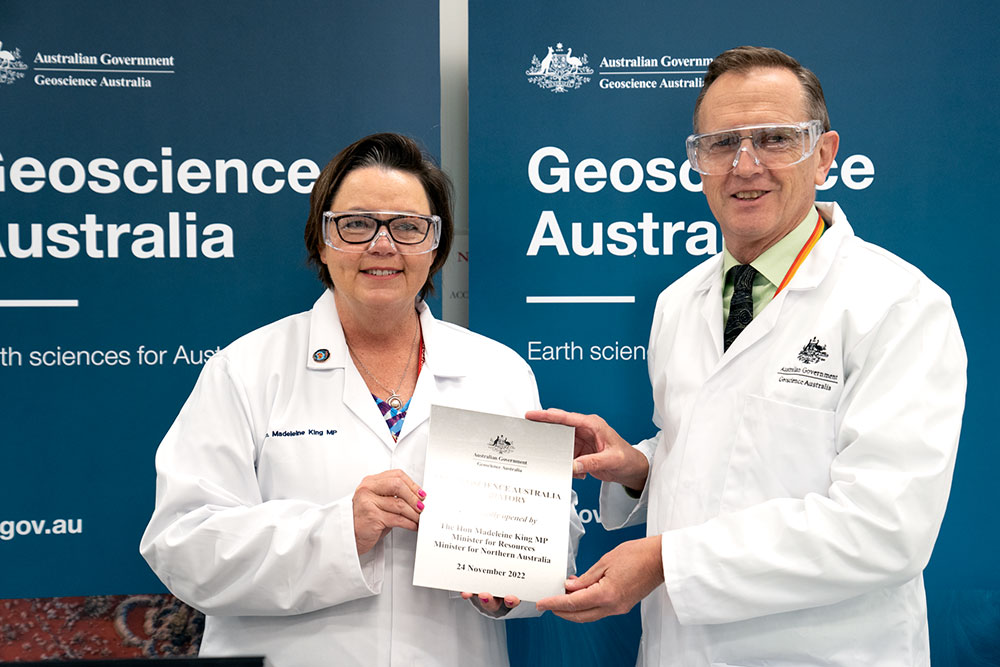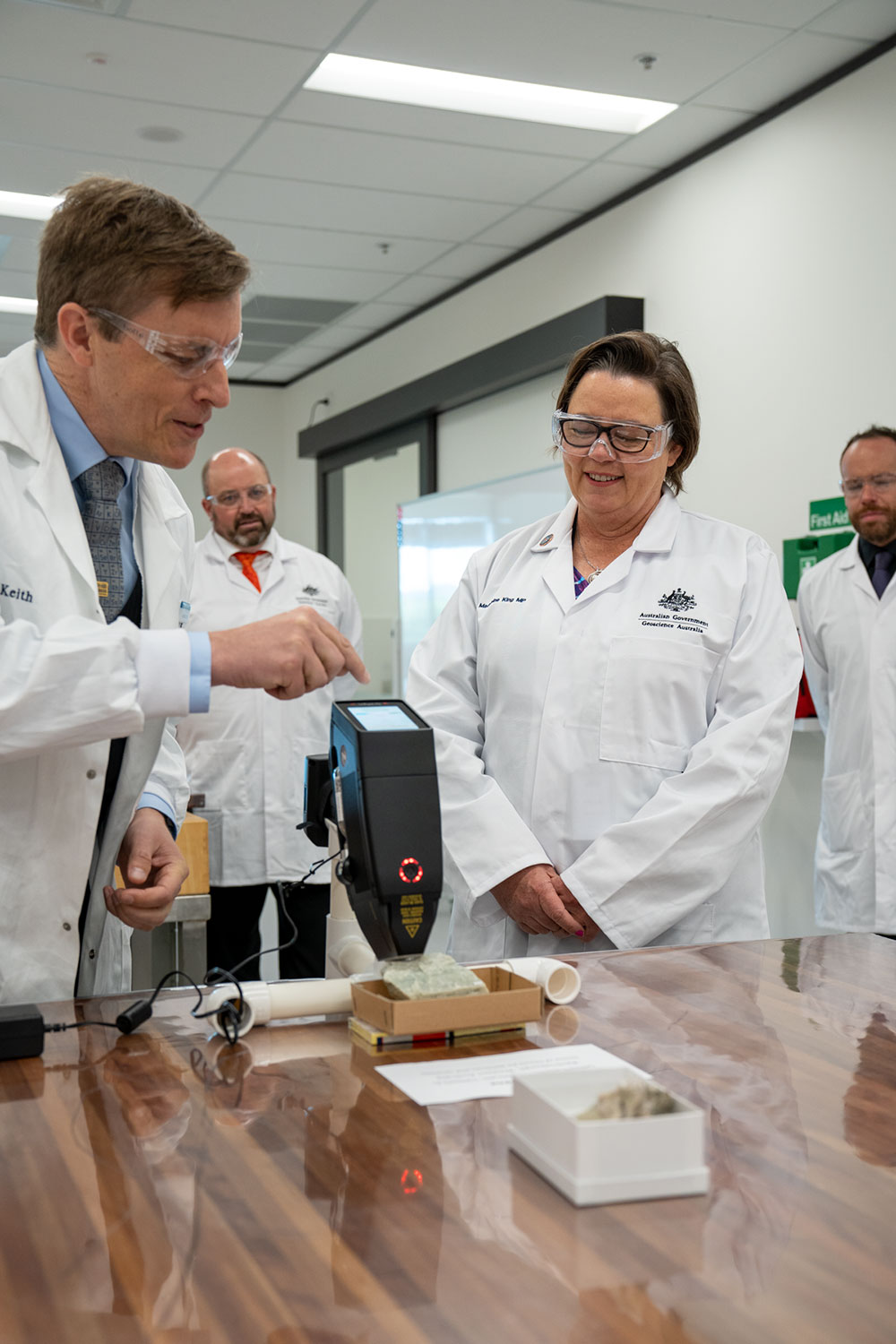Geoscience Australia is ready to support the next generation of Earth science advances, after its new modern laboratory was officially opened today by Minister for Resources and Northern Australia the Hon Madeleine King.
Minister King was given a tour of the laboratory by Geoscience Australia’s CEO Dr James Johnson.
Dr Johnson said the new laboratory at Geoscience Australia’s offices in Symonston, ACT, represents the start of an exciting new era for Australia’s national Earth sciences agency.
“For more than two decades, our laboratory staff and their expertise has helped lay the groundwork for a better understanding of Australia’s geology – knowledge that benefits all Australians,” Dr Johnson said.
“They have analysed tens of thousands of geochemistry samples from across Australia and have set the benchmark that other laboratories around the world have followed.
“The new state-of-the art laboratory will set the bar even higher – supporting our mission to provide governments, communities and industry with the precompetitive geoscience data and information needed for the transition to net zero.”
Geoscience Australia’s Director of Laboratories, Dr Keith Sircombe, said the new laboratory represented a rare opportunity to review and renew methods and workflows from the ground up.
“Laboratory safety requirements and building codes have evolved a lot since the former laboratories were designed and built in the 1990s. The new laboratory is more flexible and will evolve with new equipment and methods,” Dr Sircombe explained.
“The new laboratory space meets modern safety requirements with additions like purpose-built acid digestion and biosecurity rooms, which will provide more flexibility and support for Government advice across other portfolios – demonstrating the true cross government impact of Geoscience Australia’s work more generally.
“We have replaced old ancillary equipment to improve efficiency and space and through this process we even identified some equipment that potentially pre-dated the creation of the Bureau of Mineral Resources – Geoscience Australia’s predecessor organisation – in 1946.”
In addition to the new laboratory, Geoscience Australia will also establish a mobile laboratory under the $225 million Exploring for the Future program to support the search for minerals, energy and groundwater.
“This mobile laboratory will host exciting new equipment, with portable analytical instruments using state-of-the-art electronics pioneered by NASA’s robot rovers on Mars,” Dr Sircombe said.
All of the data analysed by Geoscience Australia’s laboratories is made publicly available through online portals such as the Exploring for the Future









